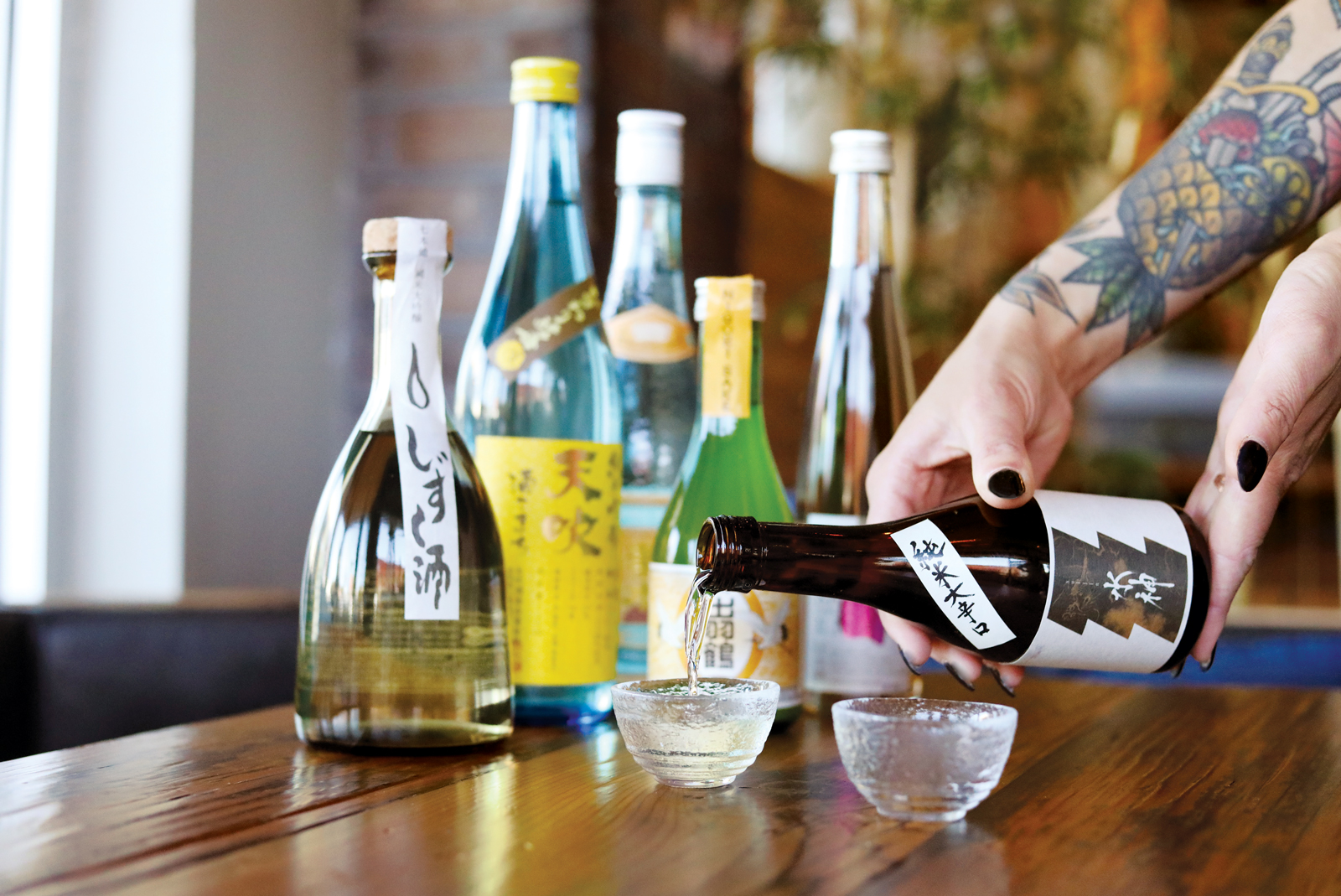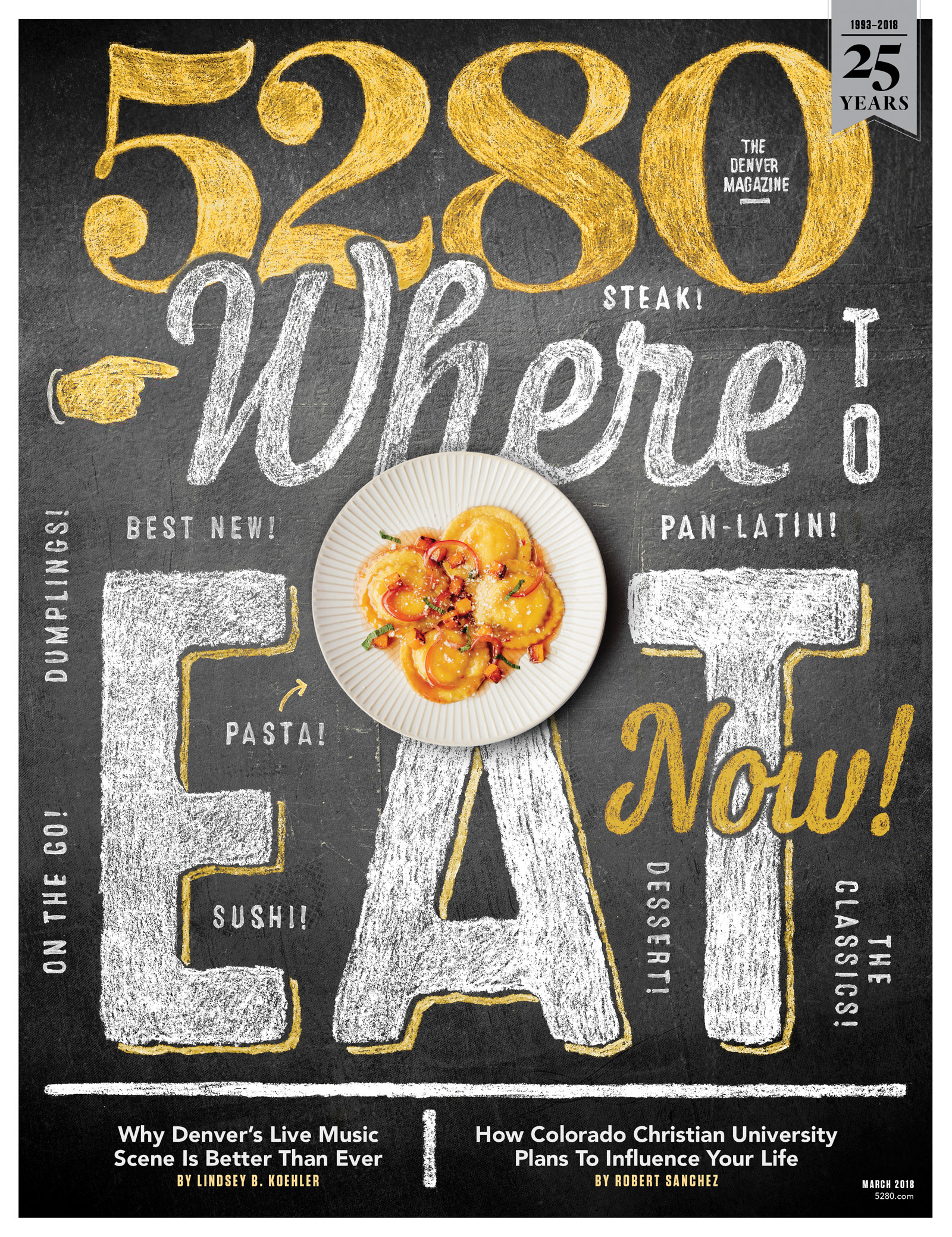The Local newsletter is your free, daily guide to life in Colorado. For locals, by locals.
Denverites confidently order saisons, Märzens, and goses but sometimes panic when handed a sake list. Pity, because the best Asian restaurants in town have created accessible, exciting menus showcasing the drink, and there’s nothing to fear: Sake is brewed like beer, after all (though its alcohol content is closer to that of wine). Made from rice instead of barley, sake’s flavor, fragrance, and type are in part determined by the amount of “polish,” or how much rice is milled off each grain during the production process; in general, more polish leads to higher quality.
Here, your guide to enjoying sake in Denver and beyond.
Sushi Den
Owners Toshi and Yasu Kizaki taste and select every bottle on this Platt Park staple’s list. Such attention to detail runs through Sushi Den’s training, too, so bar manager and certified sake specialist Chip Soares and the rest of the staff can tell you about sake culture, the brewing process, and the stories behind each bottle on the menu. There are no bad choices in this lineup—which you can also find at the Kizakis’ other restaurants, Izakaya Den and Ototo—but the bright, semidry Dassai 50 “Otter Fest” junmai daiginjo is a good place to start. 1487 S. Pearl St., 303-777-0826
Mizu Izakaya
This Japanese tavern in LoHi is known for its prolific food offerings, which span excellent sushi, noodles, yakitori, and more; it’s also got the largest sake selection in Denver. Beverage director Jerrica Ash put close to 60 sakes on her menu, with by-the-glass options on tap and bottles organized into categories such as Classic & Earthy and Clean & Elegant. From the latter grouping, dry white wine lovers will enjoy the full-bodied, extra-dry Asabiraki Suijin “God of Water” junmai. 1560 Boulder St., 720-372-7100
Bamboo Sushi
Portland-born Bamboo Sushi’s menu includes style definitions, polish percentages, and flavor profiles. Still can’t decide? Go for a sake flight and try three two-ounce pours, which Bamboo helpfully labels so you know what you’re drinking. “Tasting the varieties side by side dispels the idea that all sake tastes the same,” says beverage director Andy Adams. Don’t miss Bamboo’s signature small-batch junmai ginjo, brewed in partnership with Japan’s renowned Kobe Shu-Shin-Kan Brewery. 2715 17th St., 303-284-6600

How To Serve Sake
Pour for others with one hand on the side of the bottle and your other hand on the bottom.
Cheat Sheet
Junmai: The most pure (“jun”) type of sake, made from rice (“mai”), koji (a type of mold), yeast, and water; if you do not see this word on a sake label, it means distilled alcohol has been added in varying amounts (which can enhance flavor but also cause dreaded sake hangovers)
Daiginjo: Sake with between 35 and 50 percent rice left after polishing
Ginjo: Sake with a minimum of 60 percent rice left after polishing









